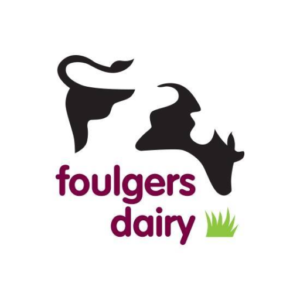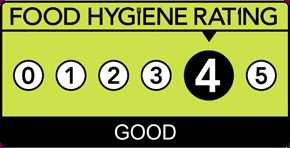A lot of our customers tell us that their favourite part of drinking the milk we deliver is that they get to pour it into their glass from ‘old-fashioned’ glass bottles. It reminds you of simpler times when you could find a moment of peace and joy in a cold beverage. Our glass bottling isn’t just a marketing ploy or branding strategy, it’s just another example of our dedication to tradition and sustainability.
The History
Before pasteurisation, most milk was produced locally and drunk quickly. It would spoil rapidly so storage wasn’t an option. Households would collect it in jugs or cans from local farms or dairies and use it that day. However, with the introduction of heat treatment, milk became a more durable commodity, opening up the possibility of new packaging options.
The first glass milk bottles started appearing in 1880s in the UK and, enabling milkmen to deliver a pre-measured pint of milk to households. The clear glass bottles also gave customers a perfect view of the condition their milk was in, demonstrating the improving hygiene standards in the industry.
Initially sealed with cardboard, the bottles were later topped with foil tops. Early bottles often had the name of the dairy embossed or painted on the bottle to encourage it to be returned to its rightful place for cleaning and reuse. This is one of the earliest examples of recycling in packaging. With British households kicking off the day with cups of tea and milky cereals or porridge, morning delivery became the norm and companies developed national networks to deliver milk in time for breakfast.
By 1975, 94% of milk was bottled, compared with only about four per cent by 2012. Forty million bottles per day were delivered to doorsteps in the early 1990s, with Unigate squat ‘dumpy’ bottle the most commonplace. The milk bottle even became a media choice in the Eighties with colour printing on bottles, and on the foil tops, being taken up by brands such as Kellogg’s, Cadbury and Brooke Bond.
However deregulation of the milk market in 1994 allowed supermarkets to start selling milk in larger volume containers, and as a loss leader. Milk bottles were heavier than plastic alternatives, making them more expensive to transport. With most people having fridges, milk no longer has to be delivered on a daily basis, so both milk deliveries and bottling went into decline.
The Turning Point
At the beginning of 2018 Prime Minister Theresa May, announced plans to scrap all avoidable plastic waste by 2042, in the Government’s 25 year Environmental Place, which could also see an extra tax on one-use plastic items.
Buoyed by growing fears about the impact of plastic on the environment, we aren’t the only company in the UK reporting an increase in interest for the traditional glass milk bottle.
Dairy UK which represents the milk industry, said doorstep deliveries of glass bottles were now around one million per day. Just two years ago the figure was estimated to be nearer 800,000.
Glass vs Plastic
The big advantage to using glass milk bottles instead of plastic or carton containers is the fact that the bottles can be reused almost instantaneously. Empty glass bottles just need a quick rinse before being left out for collection from your roundsman. Once returned they are sterilised in hot water, refilled, recapped and made ready for delivery again.
This process is much faster and has much less of an environmental imapct than having to throw old plastic or carton containers into your recycling and then waiting for it to be collected.
Once your recycling has been taken away it has to be sorted and then shipped off to recycling plants that deal with plastic, carton, paper and cardboard etc. This in itself can be a very time consuming process and also one which has an effect on the environment if you consider how much fuel is used transporting the materials and how much energy is used recycling them.
Reusable Glass Bottles Help Reduce Local Landfill Use
By purchasing your milk in reusable glass bottles you are doing your part in helping to preserve the local area.
We’ve worked it out and you will be amazed by the facts. If we deliver 5,000 gallons of milk every week, multiplied by 52 weeks in a year, that would be 260,000 gallons of milk each year. That’s 520,000 of the plastic 4 pint milk bottles already that are not sent for recycling or even dumped into landfill every year – and this is for just one local area, image the impact across East Anglia alone!
So there is some food for thought whilst pouring your milk on your cornflakes.
We have prided our self for many years on our constant delivery of milk in glass bottles and hope many more people will continue to follow suit in the march back to glass.
If you would like to support us in a move back to milk supplied in glass bottles, contact us today to arrange your next delivery…

